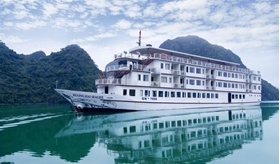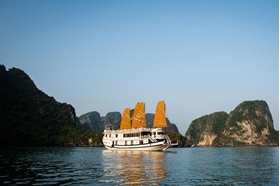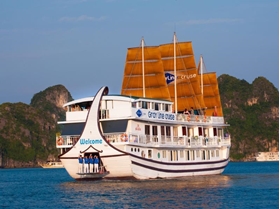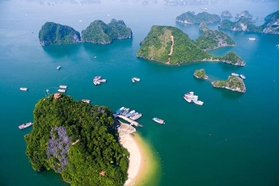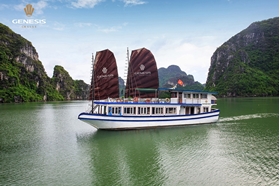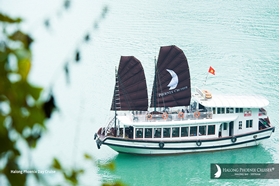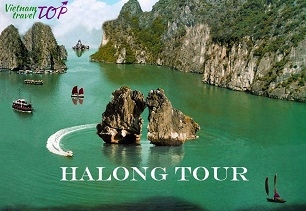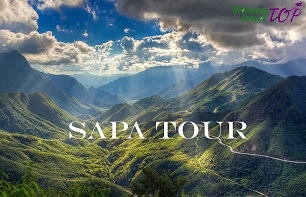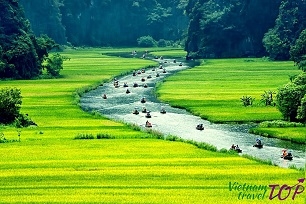Overview
Halong Bay, a UNESCO World Heritage site, has often been suggested as one of the major natural wonders of the world. It is populated by local fishermen who have lived in villages scattered throughout the area for generations.
Halong is 170 kilometres east of Hanoi. The name translated into English means ‘’ Bay of Descending Dragons’’ and first appeared in print in a 19th Century French map. There was a story about a huge sea snake being seen by a French boat in 1898 and the name emerged from there as a French newspaper described the snake as a dragon.
No modern development is permitted and as the number of people visiting Vietnam has risen so has the number taking Hanoi tour packages. There is over 100 kilometres of coastline and almost 2,000 islands as well; plenty to include in such tours. This Halong travel guide aims to provide ideas about what is available for tourists to get a comprehensive idea of the Bay and its many attractions.
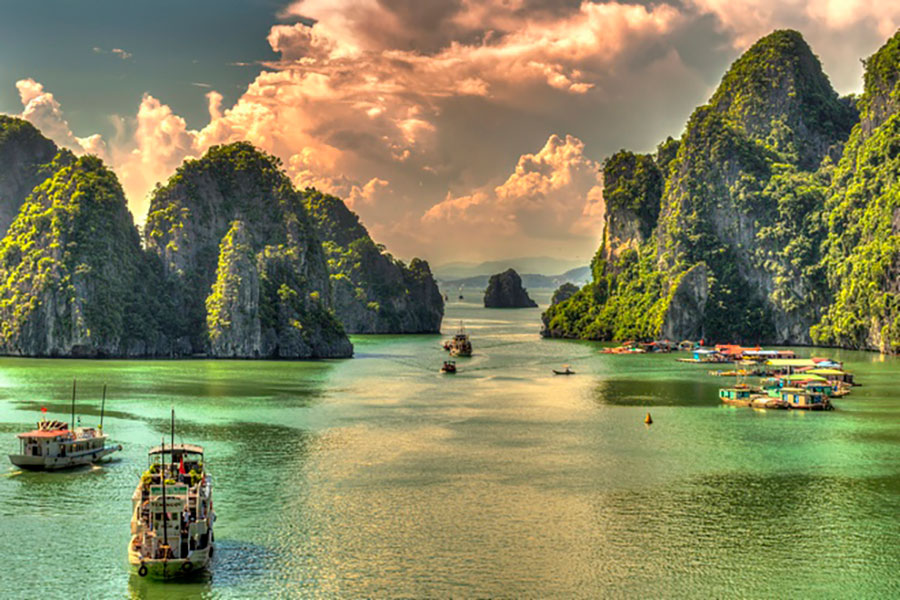
Best Time to Visit
There are two main seasons in Halong Bay. From April to the end of September it will be hot with intermittent rainfall. Temperatures will then drop and there are cool winds much of the time until spring returns again. The climate is described as tropical, coastal with an average temperature over the year of 24C, rising above 30C in the summer but averaging only 14C from October onwards.
Over 80% of annual rainfall comes during the summer even though a second monsoon, that from the north east arrives during the winter. A fairly sheltered bay, Halong is hardly ever affected by the storms which can occur elsewhere in South East Asia.
On balance March to June is the peak tourist season with fewer visitors until October and November. Having said that a Halong private tour can be arranged any time in the year. The climate in Vietnam does involve some compromising when you select your dates because of the two monsoons that hit different parts of the country so take advice from a good tour company who will be only too happy to help.
How to Get There
Some people arrive in the Bay by boat but it is more likely that the majority travel from Hanoi which is the first ‘’port’’ of entry for many overseas tourists. It is possible to organisea Halong cruise tour from an experienced tour company in Hanoi. Travel arrangements, a comfortable bus from Hanoi, are easy to arrange. The bus trip takes up to four hours from Hanoi while the good road infrastructure links the rest of the country to Halong.
There is actually a rail line though it is a freight route that someone booking a Halong private tour will not really consider.
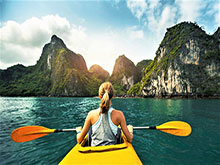
Tour Alternatives
If you have limited time then you might just decide to take a day trip into the Bay. It is such an important attraction in Vietnam that it is worth devoting more time in this beautiful part of the country. After all sunrise and sunset provide different experiences within the Bay while a clear starry night is a great sight.
You can just want to sit back and enjoy a cruise, spend a night onboard and enjoy the second day. Perhaps you want to kayak and explore some of the caves? The choice is yours. Whether you have the time to research the detail or not experienced tour companies will give you all the advice and help you need for a Halong cruise tour.
What you decide to book is dependent upon the time you have available. If you discuss your holiday with an experienced tour company in Hanoi then you can decide what to include in your Vietnam holiday. You may decide to have a single night on board but if you opt for two nights then you will have the opportunity to go further out to some of the more outlying islands.
As already mentioned there are many islands in the Bay and here are just a few examples of ones that might be included on Halong tour packages.
• Cat Ba is the largest of the islands in Halong Bay. It is a national park and there is overnight accommodation that can be included within a Halong private tour. The island is the home of the Cat Ba langur, an endangered primate. There is forest, coral, sea grass beds and mangroves. There are 6 communities with Cat Ba town the main one; a total population of around 13,000. Another 4,000 live in offshore fishing villages.
• Quan Lan has some great beaches and is one of the outlying islands. It is sparsely populated with little to do except enjoy the great sand and warm sea.
• Dau Be is great for diving. There are grottoes, spectacular coral and inland lakes surrounded by steep cliffs. The lakes are interlinked and it is a great experience to kayak on the waters.
• Bo Hon has one of the Bay’s best known caves, Hang Trinh Nu. The flora and fauna on this fairly large island are found in an environment of limestone cliffs and green forests.
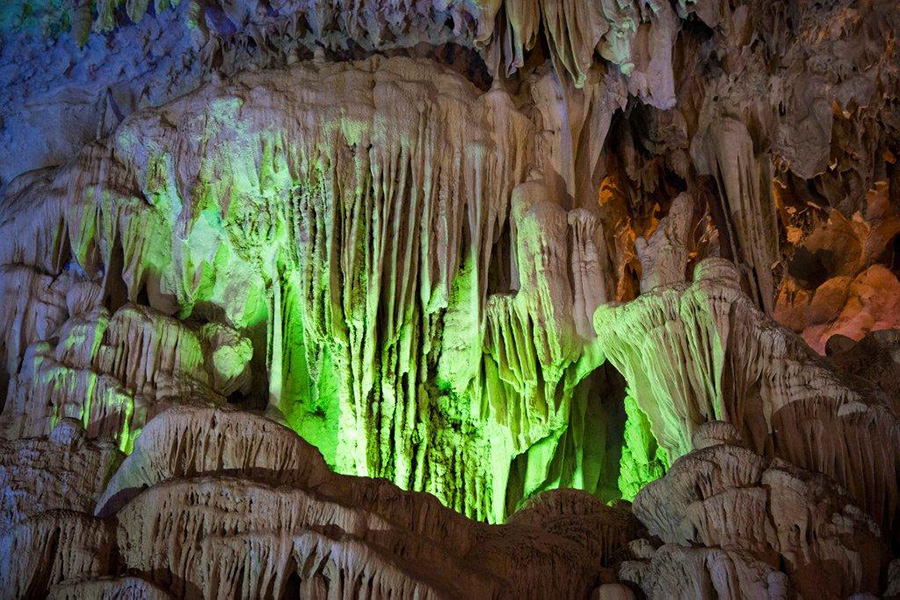
The Vessel
A Halong cruise tour on a traditional junk amongst the islands in Halong Bay is a delight. The junk has been part of South East Asia life for centuries. The junks used for Halong tour packagesmight look old but they are thoroughly modern and comfortable. Not every cruise involves sailing on a junk but it is surely the best way to travel? You will be given some options when you book your Halong private tour; if you want luxury then it is available but there is a cheaper way to sail as well which is guaranteed to be comfortable and equally exciting.
You can expect great Vietnamese cuisine and there is nowhere that you will get fish any fresher on your plate.
Cuisine
One of the pleasures of travel is sampling the local cuisine. There are often regional variations within individual countries and when you are at Halong Bay then you obviously get seafood as a central part of the diet whether you are on board a vessel or staying on the mainland.
The following may not be things you have encountered before:
• Ngan is a large version of a clam which is often put into porridge or soup and accompanied with wine. Be careful to say the word in a high pitch otherwise you will get duck.
• Tu Hai is a rare shellfish, steamed or baked served in soup or with a salad. You can expect garlic and fish sauce in a typical recipe using Tu Hai.
• Gat Gu is a rice pancake; gat gu means ‘’nodding’’ so you can expect to see plenty of that as diners begin to eat and as thanks for the food.
• Sa Sung is sandworm cooked with celery and leek. The sandworm will be grilled or friend so as to be crunchy. It is often put into soup and regularly diners drink alcohol when eating it.
• Sam is a crustacean that is cooked in a variety of meals; sweet and sour, breaded, grilled or eaten with pasta. Look for Cao Xanh or Gieng Don on the menu.
• Ha are a small type of oyster and added to soup with onions, tomatoes and often pineapple.
There will be plenty of things on the menu that overseas visitors will find familiar if you are not too adventurous.
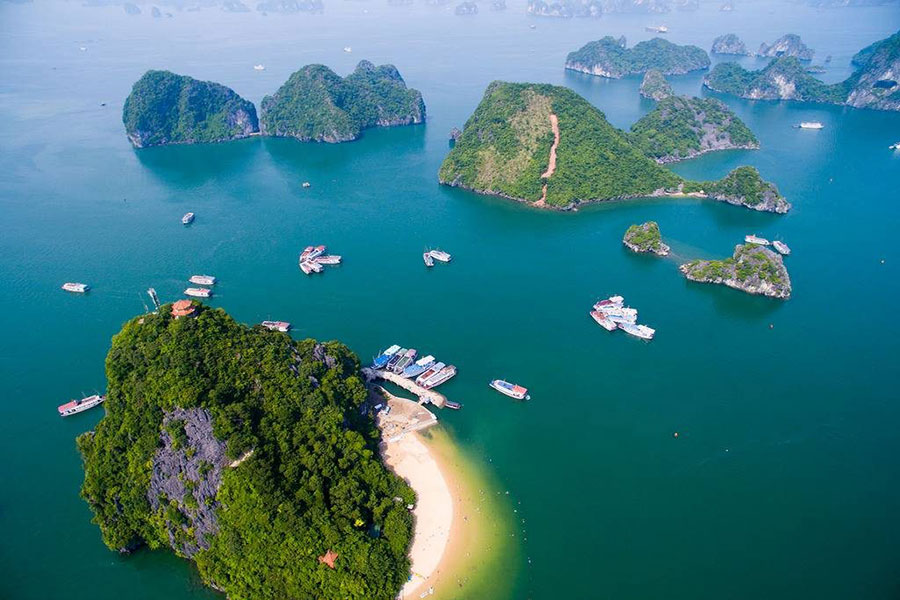
Shopping
Few tourists going to Halong Bay expect to see big shopping malls and they won’t. Those looking for souvenirs of their Halong tour packages are best advised to go to the night market in Halong City where they will be able to buy such things such as necklaces and wooden products made by local craftsmen. Leather items are also fairly good. Pay a visit and see for yourself.
Accommodation
If you decide to visit Halong Bay then you can sleep on a boat for as many nights as you want in theory though 2, maximum 3, will be sufficient for you to really be able to understand the Bay, its attractions and its people. You may anchor for the night at one of the floating fishing villages to give you further insight into the daily lives of these people. As the Bay becomes more popular so do the alternatives to cater for tourists.
Islands like Cat Ba are inhabited and as a result it is possible to spend a night on dry land but within the Bay itself. There is actually a 5 Star resort on the island of Tuan Chau.
There are also varying levels of accommodation on the perimeter of the Bay. Halong is a city close by where there is everything from budget backpacker accommodation to luxury. You can get a luxury villa looking out into the Bay if you wish and Halong tour packages can be tailor-made to the wishes of clients.






